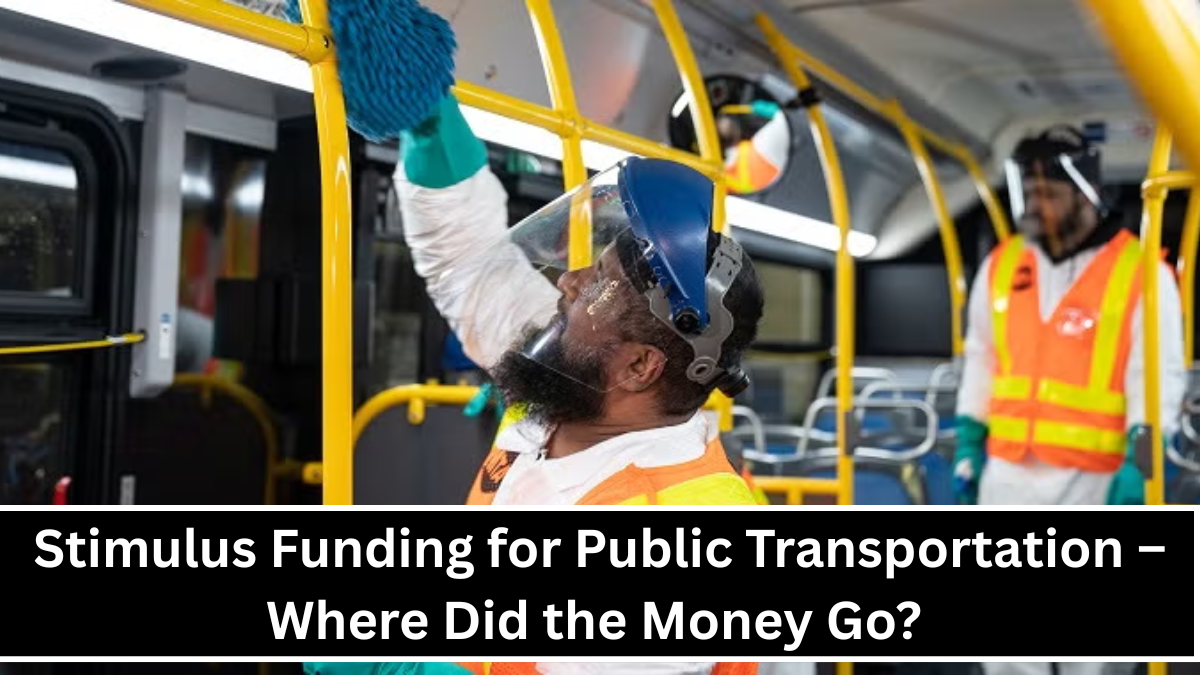During times of crisis, governments often release emergency funds—known as stimulus packages—to keep the economy stable. In the United States, several large stimulus bills were passed in response to the COVID-19 pandemic. These included money not just for hospitals and small businesses, but also for public services like transportation. Billions of dollars were allocated to support subways, buses, and trains, as many public transit systems faced huge losses. But years later, many people are still asking: Where did all that money go? Let’s take a closer look at how the stimulus funding was spent, what it achieved, and what challenges still remain.
Tracking the Funds: How Stimulus Helped Public Transportation
When the COVID-19 pandemic began in 2020, fewer people were using public transportation due to lockdowns, remote work, and health concerns. Transit agencies across the U.S. lost millions of riders almost overnight, leading to massive drops in revenue. To avoid shutting down services or laying off workers, the federal government stepped in with emergency stimulus money.
Three major funding packages supported public transportation:
- CARES Act (March 2020) – This package included about $25 billion for transit agencies to maintain essential operations.
- CRRSA Act (December 2020) – Provided another $14 billion to keep services running into 2021.
- American Rescue Plan (March 2021) – Added a further $30.5 billion, helping agencies avoid long-term cuts and layoffs.
In total, around $70 billion was allocated to public transportation agencies across the country.
These funds were mainly used for:
- Paying salaries and avoiding staff layoffs
- Covering lost fare revenues
- Cleaning and safety upgrades
- Maintaining routes for essential workers
- Upgrading buses and trains for the future
For example, major agencies like New York’s MTA and San Francisco’s BART used the money to keep their systems running during the worst months of the pandemic.
However, not all transit systems spent the money the same way. Some used the extra funds to invest in long-term improvements, while others simply covered basic costs. Some smaller agencies still struggled, as the formula used to distribute funds often favored larger cities.
Stimulus funding provided a lifeline to public transportation when it was needed most. Without federal support, many cities could have lost their essential transit systems during the pandemic. While the money helped prevent disaster, the recovery is still ongoing. Ridership in many areas is still below pre-pandemic levels, and transit agencies are again facing financial uncertainty as federal funds run out. The big question now is: How will public transportation stay strong without more federal help? As we move forward, cities must find new ways to fund, modernize, and improve their transit systems so they’re ready for the next challenge.
FAQ’s:
Q1. What is stimulus funding?
A1. Stimulus funding is emergency money provided by the government to support the economy during crises. It helps businesses, workers, and services stay afloat when normal income drops.
Q2. How much stimulus money went to public transportation?
A2. Around $70 billion was allocated through three major stimulus bills: the CARES Act, CRRSA Act, and American Rescue Plan.
Q3. How was the money used by transit agencies?
A3. Most of the funds were used to pay staff, cover lost fare revenue, improve health and safety, and maintain regular bus and train services during the pandemic.
Q4. Did all cities get the same amount?
A4. No. The money was divided based on population size and ridership levels. Large cities like New York and Chicago received more funding than smaller towns.
Q5. What challenges remain for public transportation?
A5. Even with the funding, many transit systems are still struggling with fewer riders, aging infrastructure, and future budget gaps as federal aid ends.
